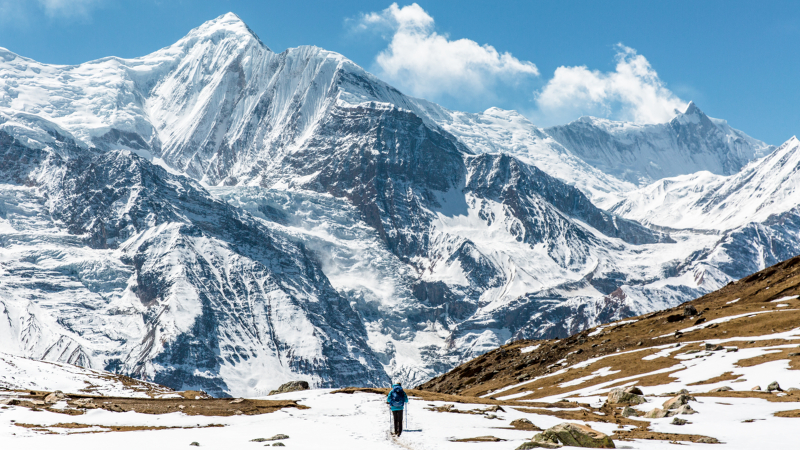
It is one of the classic hiking trails in India, and it remains one of the most popular treks in Nepal.
The Annapurna Circuit, a 12- to 21-day route that starts in the lush green villages of the Himalayan foothills. Take treks along the 5,416-meter Thorong La Pass down to the Tibetan-influenced temples and communities in the Mustang Valley.
If you want to try a little of everything Nepal You have to offer it, this is probably the best a trip To get going, but it's definitely not easy. The circuit is very challenging at times, and the high elevation and unpredictable weather of the Annapurna mountain range can make crossing the Thorong La Pass a dangerous task - especially if you're not prepared.
Thank you, I've got your back! So here are ten things you really should know in order to complete the stunner Annapurna Circuit Safe and with a smile on your face.
1. Plan the correct time of year
Like many treks in Nepal, there are certain times of the year when the weather conditions are perfect. for the Annapurna Circuit, October and November OR April and May are widely considered the best times for trekking. The weather during these two seasons is generally clear and dry, hence it is not too cold when heading to higher altitudes. These two seasons are also the busiest times on the trail, as many other trekkers from around the world head to the Himalayas.
You can also trek at other times of the year, but you need to be more prepared for bad weather. The winter season, from December to March, can have clear skies and stunning views. But it can be incredibly cold at higher elevations, with heavy snow on the ground that can often close Thorong La Pass on short notice. If you decide to trek during the winter, make sure you have extra layers, a thick sleeping bag suitable for temperatures of at least -20°C and narrow straps which can be purchased Kathmandu And steam.
Now go: Experience the beauty of the Annapurna circuit on this 16-day adventure
2. Bring only what you need, and leave the rest behind
When you trek the Annapurna Circuit with Intrepid, Nepalese porters will carry 10kg of your gear. Anything extra should be carried on your back, so packing as lightly as possible is essential. There are a few things you need, such as a good quality sleeping bag, warm jackets, medication, thermal layers, and a headlamp. But leave your jeans, laptop, and makeup in Kathmandu. You really don't need them on the road, and your back will thank you for that!
Subscribe to our newsletter to get the latest trekking news, offers and competitions
3. Height is not to be underestimated
Altitude sickness can occur at any time above 2,500 metres. It doesn't matter how fit you are, it can affect anyone and do it randomly. You can stay prepared by taking Diamox, which is a high medication, but apart from that, just take it slow, drink plenty of water and listen to your body. Before you hit the road, read about the symptoms of altitude sickness so you'll be aware of them if you start to feel the effects. Your guide will also be very knowledgeable about the hike and can be an essential source of help if you are not feeling well. The Annapurna circuit reaches an altitude of more than 5000 metres, which is a very dangerous altitude, and almost everyone will experience some mild symptoms such as headaches or difficulty sleeping.
Related: Annapurna or Everest? Your ultimate travel guide
4. Be prepared for all weather, whatever the time of year
While certain times of the year have favorable weather for trekking (see point one), it's essential to be prepared for all possible conditions, no matter when you decide to go. High in the Himalayas, the weather is unpredictable, and snow, rain or storms can occur at any time. Climate change also means that weather patterns have become more volatile over the past few years. Even if you're trekking in October, be prepared for snow or storms on the road. Pack enough warm clothes, make sure your shoes are waterproof, and don't forget sunscreen or a sun hat.
Now go: Discover the highlights of Annapurna circuit on this 16-day escape
5. Eat well and take care of your body
One of the best things about the Annapurna Circuit is the food and hospitality that you will receive at the cafes. Every evening, after a long day of trekking, you will be delighted to sit in front of a roaring fire and tuck into a plate of dal bhat (a traditional Nepalese meal of rice, lentils, curried vegetables and pickles). The food is delicious and very filling, and your body will be grateful for it the next day when you're feeling refreshed and ready to hit the road again. Other popular offerings at guesthouses include garlic soup, a local remedy for altitude sickness and much better than it sounds. Plus fried potatoes and pasta with local vegetables and of course apple pie - a favorite Annapurna sweet treat because of the apple orchards that grow in many villages along the way. For snacks, I'd recommend stocking up in Kathmandu, where some items like the circle chocolate bars can get expensive.
Related: 8 Nepali dishes you have to try
6. It's good to have a way to purify your water
Plastic is a huge problem on trekking routes through Nepal, as there is no waste disposal system in most of these small villages. This makes the mountainsides littered with discarded plastic bottles, which is really not the way we want to treat these Areas of Amazing Natural Beauty! You can't drink tap water in Nepal, and you really need to drink a lot while hiking at high altitudes.
I recommend getting a reusable steel water bottle in Kathmandu. Along the pass, there are many villages with pure drinking water stations. Here you can refill your own bottle and it is actually much cheaper than buying bottled water. You can also use water purification tablets or purchase a sterilizer. During the evening we would often order a pot of hot water or tea and drink that, you could also just fill the bottle with whatever was left in the pot and it would still be good to drink the next day.
TAKE ME THERE: Discover our full range of Annapurna Circle Spacers
7. Learn some cultural respect
For many people, trekking in Nepal is about mountain scenery and hiking. But this is also a cultural trail, and it's important to respect the people who call these villages home. I recommend learning more about the cultures you're going through. Talk to the families who run the teahouses and visit the local gompas or temples. Opening your eyes to the trail's cultures, religions, and heritage will make it an enjoyable and meaningful experience, and it also means a lot to locals when hikers care about their lives.
Related: My amazing meeting with a guy on a mountain trek in Nepal
8. Never run out of cash
Once you leave Besisahar, there are no cash machines on the Annapurna Trail until you reach Jomsom after Thorong La Pass. Therefore, you must be prepared and carry all the money that you will need for the trip. While food and drinks in cafés can be cheap in the lowlands, it increases exponentially as the elevation increases and the road disappears. In Kathmandu, a dal bhat will probably cost you around 200 rupees, but this can grow to around 800 when you pass 3,500 metres. Western foods like burgers, pasta, and burritos (yes, all the foods you can get on the way), also tend to be expensive when they go up. I would recommend taking at least $20/day for the trip, and if you are a big eater or like to drink alcohol, $30-40/day is better.
Now go: deal with ANNAPURNA and to the fullest in this epic 31 days
9. Prepare yourself for Thorong La Pass
Crossing Thorong La Pass was probably the hardest day of my life! Get up before sunrise and head through the narrow hills in the thick snow. Then he climbed steadily for hours before finally reaching the prayer flags on the trail, breathless and completely relaxed. Well, maybe I don't sell it very well. But it is imperative that you be prepared for the day, which will really push even the fittest hikers to their limits.
As long as you are prepared, dressed enough warmly and acclimatized enough to ensure your body can make the trek comfortably, reaching Thorong La Pass will be one of the most exhilarating moments of your trip! Plus, once you reach the top, you can descend 1,600 meters to Muktinath, where the air is thick with oxygen and there are also hot baths to look forward to.
Go now: limited in time? Our 5 day hiking tour through the Annapurna mountain range
10. Be positive, take it slow and enjoy the ride!
Travel aims to push you and a challenge You are in many ways and trekking the Annapurna Circuit in Nepal will definitely do that. While this is a challenging trek at times, it is also an incredibly fun trek that can be completed by people of all ages and all fitness levels. The most important thing throughout the journey is to stay positive. Even when your body aches and you crave a hot shower, positivity will carry you forward and it won't be long before the breathtaking panorama of the Himalayas makes you remember why here you pushed yourself to the limit. It's these amazing views, the wonderful hospitality of the locals and the company of your trekking companions that really make this trip one you will remember for the rest of your life!
Related: Why challenging yourself is an important part of traveling
Do you think you are ready to take over the Annapurna Circuit? Take a look at our selection of trekking tours to take you there. Have you ever dealt with it and are you looking for a new challenge? Check out our collection of Walking and holidays from all over the world.
Source link
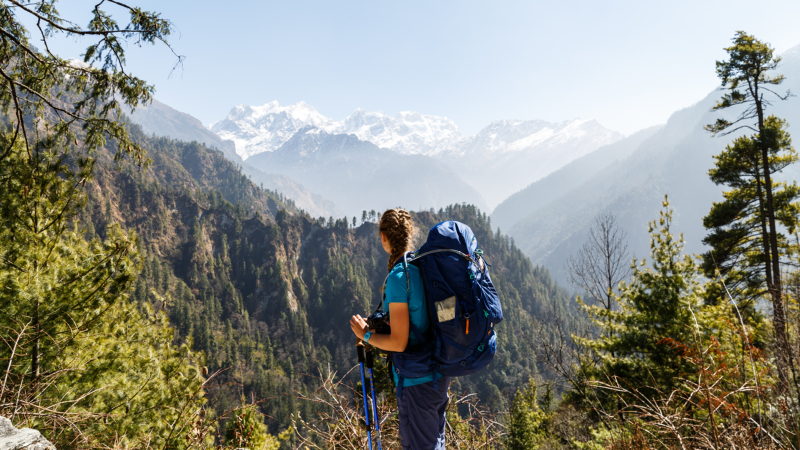
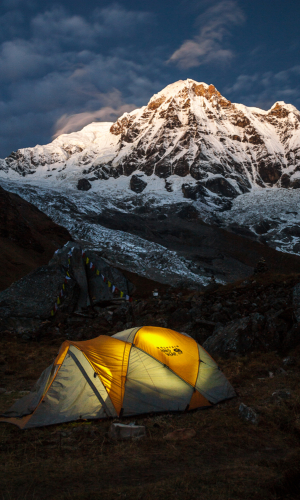
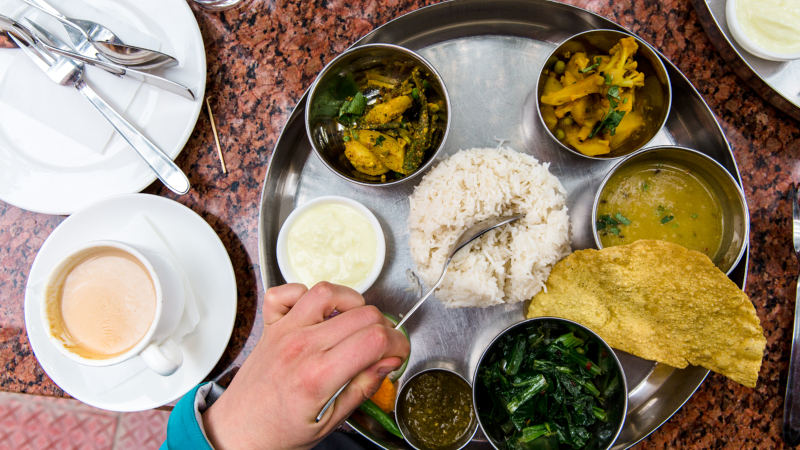
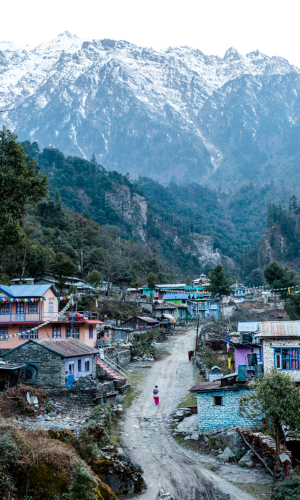
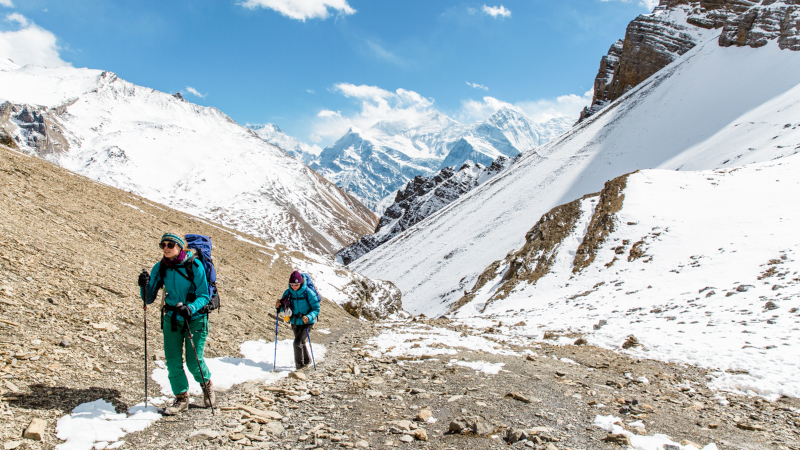
0 Comments